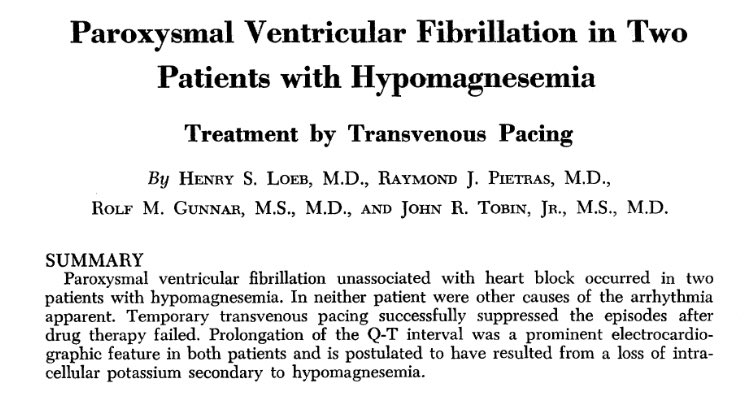1/
Ever wonder why magnesium (Mg) is used to treat Torsades de Pointes?
The answer is fascinating, elegant, and also explains why Mg treats another clinical entity - eclampsia
#medthread #tweetorial #medtwitter
Ever wonder why magnesium (Mg) is used to treat Torsades de Pointes?
The answer is fascinating, elegant, and also explains why Mg treats another clinical entity - eclampsia
#medthread #tweetorial #medtwitter
2/
First, let& #39;s find how torsades was originally described (and named!):
 https://abs.twimg.com/emoji/v2/... draggable="false" alt="💡" title="Electric light bulb" aria-label="Emoji: Electric light bulb">Francois Dessertenne noted "ventricular tachycardia with two variable foci" in a patient in 1966
https://abs.twimg.com/emoji/v2/... draggable="false" alt="💡" title="Electric light bulb" aria-label="Emoji: Electric light bulb">Francois Dessertenne noted "ventricular tachycardia with two variable foci" in a patient in 1966
 https://abs.twimg.com/emoji/v2/... draggable="false" alt="💡" title="Electric light bulb" aria-label="Emoji: Electric light bulb">He coined the arrythmia torsades de dointes, connoting "twisting peaks"
https://abs.twimg.com/emoji/v2/... draggable="false" alt="💡" title="Electric light bulb" aria-label="Emoji: Electric light bulb">He coined the arrythmia torsades de dointes, connoting "twisting peaks"
https://bit.ly/2XN9Hp5 ">https://bit.ly/2XN9Hp5&q...
First, let& #39;s find how torsades was originally described (and named!):
https://bit.ly/2XN9Hp5 ">https://bit.ly/2XN9Hp5&q...
3/
To understand how Mg treats torsades we need to understand the pathophys of the arrythmia itself.
 https://abs.twimg.com/emoji/v2/... draggable="false" alt="▶️" title="Right-pointing triangle" aria-label="Emoji: Right-pointing triangle">Torsades is a ventricular arrythmia of repolarization, occurring in patients with prolonged QT intervals (usually acquired from drugs, ischemia, or
https://abs.twimg.com/emoji/v2/... draggable="false" alt="▶️" title="Right-pointing triangle" aria-label="Emoji: Right-pointing triangle">Torsades is a ventricular arrythmia of repolarization, occurring in patients with prolonged QT intervals (usually acquired from drugs, ischemia, or https://abs.twimg.com/emoji/v2/... draggable="false" alt="⬇️" title="Downwards arrow" aria-label="Emoji: Downwards arrow">electrolytes)
https://abs.twimg.com/emoji/v2/... draggable="false" alt="⬇️" title="Downwards arrow" aria-label="Emoji: Downwards arrow">electrolytes)
To understand how Mg treats torsades we need to understand the pathophys of the arrythmia itself.
4/
There are 4 phases of repolarization of cardiac myocytes
1: K efflux
2: Ca influx
3 and 4: K efflux
Calcium influx in phase 2 "stalls" repolarization as in/out charge flow is balanced (more on this later)
https://bit.ly/34khj4T ">https://bit.ly/34khj4T&q...
There are 4 phases of repolarization of cardiac myocytes
1: K efflux
2: Ca influx
3 and 4: K efflux
Calcium influx in phase 2 "stalls" repolarization as in/out charge flow is balanced (more on this later)
https://bit.ly/34khj4T ">https://bit.ly/34khj4T&q...
5/
Torsades arises from a specific sequence of events that disrupts repolarization.
 https://abs.twimg.com/emoji/v2/... draggable="false" alt="✅" title="White heavy check mark" aria-label="Emoji: White heavy check mark">Sinus beat
https://abs.twimg.com/emoji/v2/... draggable="false" alt="✅" title="White heavy check mark" aria-label="Emoji: White heavy check mark">Sinus beat
 https://abs.twimg.com/emoji/v2/... draggable="false" alt="❌" title="Cross mark" aria-label="Emoji: Cross mark">Prolonged QT
https://abs.twimg.com/emoji/v2/... draggable="false" alt="❌" title="Cross mark" aria-label="Emoji: Cross mark">Prolonged QT
 https://abs.twimg.com/emoji/v2/... draggable="false" alt="❌" title="Cross mark" aria-label="Emoji: Cross mark">Ventricular ectopic beat during depol (aka an "early after depolarization" or EAD, thought to be calcium-mediated)
https://abs.twimg.com/emoji/v2/... draggable="false" alt="❌" title="Cross mark" aria-label="Emoji: Cross mark">Ventricular ectopic beat during depol (aka an "early after depolarization" or EAD, thought to be calcium-mediated)
 https://abs.twimg.com/emoji/v2/... draggable="false" alt="❌" title="Cross mark" aria-label="Emoji: Cross mark">Re-entrant arrythmia
https://abs.twimg.com/emoji/v2/... draggable="false" alt="❌" title="Cross mark" aria-label="Emoji: Cross mark">Re-entrant arrythmia
https://bit.ly/2ruAj1R ">https://bit.ly/2ruAj1R&q...
Torsades arises from a specific sequence of events that disrupts repolarization.
https://bit.ly/2ruAj1R ">https://bit.ly/2ruAj1R&q...
6/
It turns out that seeing torsades on the monitor is literally watching a re-entry circuit circulate
 https://abs.twimg.com/emoji/v2/... draggable="false" alt="💥" title="Collision symbol" aria-label="Emoji: Collision symbol">Terrifying but also striking to see
https://abs.twimg.com/emoji/v2/... draggable="false" alt="💥" title="Collision symbol" aria-label="Emoji: Collision symbol">Terrifying but also striking to see
https://bit.ly/2OKJdjL ">https://bit.ly/2OKJdjL&q...
It turns out that seeing torsades on the monitor is literally watching a re-entry circuit circulate
https://bit.ly/2OKJdjL ">https://bit.ly/2OKJdjL&q...
7/
Now that we understand torsades, how did Mg come to be preferred therapy?
The original description was in 1984 when Mg infusion treated 3 patients w/ torsades who had acquired long QT.
All had normal serum Mg levels, the QT intervals didn& #39;t shorten
https://bit.ly/2OhCm2q ">https://bit.ly/2OhCm2q&q...
Now that we understand torsades, how did Mg come to be preferred therapy?
The original description was in 1984 when Mg infusion treated 3 patients w/ torsades who had acquired long QT.
All had normal serum Mg levels, the QT intervals didn& #39;t shorten
https://bit.ly/2OhCm2q ">https://bit.ly/2OhCm2q&q...
8/
It is not totally clear how they figured out that this might work, but they cite a paper from 1968 where 2 patients w/ Vfib from low Mg (which was actually torsades) were treated with overdrive pacing.
It is not totally clear how they figured out that this might work, but they cite a paper from 1968 where 2 patients w/ Vfib from low Mg (which was actually torsades) were treated with overdrive pacing.
9/
So how does Mg actually work?
 https://abs.twimg.com/emoji/v2/... draggable="false" alt="💡" title="Electric light bulb" aria-label="Emoji: Electric light bulb">It turns that Mg, as a cation, is an effective Ca channel blocker.
https://abs.twimg.com/emoji/v2/... draggable="false" alt="💡" title="Electric light bulb" aria-label="Emoji: Electric light bulb">It turns that Mg, as a cation, is an effective Ca channel blocker.
https://bit.ly/2OkFt9H ">https://bit.ly/2OkFt9H&q...
So how does Mg actually work?
https://bit.ly/2OkFt9H ">https://bit.ly/2OkFt9H&q...
10/
 https://abs.twimg.com/emoji/v2/... draggable="false" alt="💡" title="Electric light bulb" aria-label="Emoji: Electric light bulb">Blocking Ca channels suppresses the EADs, allowing the re-entrant arrythmia to terminate. This was first described in dogs who had torsades-like arrythmias induced by cesium infusions with magnesium rescue.
https://abs.twimg.com/emoji/v2/... draggable="false" alt="💡" title="Electric light bulb" aria-label="Emoji: Electric light bulb">Blocking Ca channels suppresses the EADs, allowing the re-entrant arrythmia to terminate. This was first described in dogs who had torsades-like arrythmias induced by cesium infusions with magnesium rescue.
https://bit.ly/2XKz7DK ">https://bit.ly/2XKz7DK&q...
https://bit.ly/2XKz7DK ">https://bit.ly/2XKz7DK&q...
11/
This was described by @PulmCrit as naloxone for torsades (I really like that description)
He also advocates for protocol-driven, continuous Mg infusions to make sure the serum levels stay up (goal 3.5-5 mg/dl) and those Ca channels stay blocked.
https://bit.ly/2OLEJcK ">https://bit.ly/2OLEJcK&q...
This was described by @PulmCrit as naloxone for torsades (I really like that description)
He also advocates for protocol-driven, continuous Mg infusions to make sure the serum levels stay up (goal 3.5-5 mg/dl) and those Ca channels stay blocked.
https://bit.ly/2OLEJcK ">https://bit.ly/2OLEJcK&q...
12/
Calcium channel blockade also explains why Mg treats eclamptic seizures:
 https://abs.twimg.com/emoji/v2/... draggable="false" alt="💡" title="Electric light bulb" aria-label="Emoji: Electric light bulb">Eclamptic seizures are driven by dysregulated cerebral vasoconstriction
https://abs.twimg.com/emoji/v2/... draggable="false" alt="💡" title="Electric light bulb" aria-label="Emoji: Electric light bulb">Eclamptic seizures are driven by dysregulated cerebral vasoconstriction
 https://abs.twimg.com/emoji/v2/... draggable="false" alt="💡" title="Electric light bulb" aria-label="Emoji: Electric light bulb">Mg blocks Ca channels and induced vasodilation
https://abs.twimg.com/emoji/v2/... draggable="false" alt="💡" title="Electric light bulb" aria-label="Emoji: Electric light bulb">Mg blocks Ca channels and induced vasodilation
 https://abs.twimg.com/emoji/v2/... draggable="false" alt="✅" title="White heavy check mark" aria-label="Emoji: White heavy check mark">Seizures stop
https://abs.twimg.com/emoji/v2/... draggable="false" alt="✅" title="White heavy check mark" aria-label="Emoji: White heavy check mark">Seizures stop
https://bit.ly/2KUupxX ">https://bit.ly/2KUupxX&q...
Calcium channel blockade also explains why Mg treats eclamptic seizures:
https://bit.ly/2KUupxX ">https://bit.ly/2KUupxX&q...
13/
To sum up:
 https://abs.twimg.com/emoji/v2/... draggable="false" alt="💡" title="Electric light bulb" aria-label="Emoji: Electric light bulb">Torsades is a re-entrant ventricular arrythmia in the setting of a prolonged QT interval
https://abs.twimg.com/emoji/v2/... draggable="false" alt="💡" title="Electric light bulb" aria-label="Emoji: Electric light bulb">Torsades is a re-entrant ventricular arrythmia in the setting of a prolonged QT interval
 https://abs.twimg.com/emoji/v2/... draggable="false" alt="💡" title="Electric light bulb" aria-label="Emoji: Electric light bulb">Early after depolarizations, triggered by Ca influx, lead to torsades
https://abs.twimg.com/emoji/v2/... draggable="false" alt="💡" title="Electric light bulb" aria-label="Emoji: Electric light bulb">Early after depolarizations, triggered by Ca influx, lead to torsades
 https://abs.twimg.com/emoji/v2/... draggable="false" alt="💡" title="Electric light bulb" aria-label="Emoji: Electric light bulb">Mg blocks Ca channels and
https://abs.twimg.com/emoji/v2/... draggable="false" alt="💡" title="Electric light bulb" aria-label="Emoji: Electric light bulb">Mg blocks Ca channels and  https://abs.twimg.com/emoji/v2/... draggable="false" alt="❌" title="Cross mark" aria-label="Emoji: Cross mark">the arrythmia
https://abs.twimg.com/emoji/v2/... draggable="false" alt="❌" title="Cross mark" aria-label="Emoji: Cross mark">the arrythmia
 https://abs.twimg.com/emoji/v2/... draggable="false" alt="💡" title="Electric light bulb" aria-label="Emoji: Electric light bulb">Mg treats eclamptic seizures by a similar mechanism
https://abs.twimg.com/emoji/v2/... draggable="false" alt="💡" title="Electric light bulb" aria-label="Emoji: Electric light bulb">Mg treats eclamptic seizures by a similar mechanism
To sum up:
What do you think #medtwitter?
CC: @laxswamy @ChrisWorsham @virenkaul @grecoa3 @dina_khateebDO @AdamRodmanMD @tony_breu @ETSshow @cjchiu @gbosslet @aoglasser
CC: @laxswamy @ChrisWorsham @virenkaul @grecoa3 @dina_khateebDO @AdamRodmanMD @tony_breu @ETSshow @cjchiu @gbosslet @aoglasser
This is the correct source for tweet #8
https://www.ahajournals.org/doi/pdf/10.1161/01.CIR.37.2.210">https://www.ahajournals.org/doi/pdf/1...
https://www.ahajournals.org/doi/pdf/10.1161/01.CIR.37.2.210">https://www.ahajournals.org/doi/pdf/1...
Props to @downsjw2000 @ElizaMillerMD and others who pointed out that, in eclampsia, Mg has other effects besides vasodilation including NMDA blockade (also by blocking calcium channels!) and neuromodulatory effects

 Read on Twitter
Read on Twitter
 Francois Dessertenne noted "ventricular tachycardia with two variable foci" in a patient in 1966https://abs.twimg.com/emoji/v2/... draggable="false" alt="💡" title="Electric light bulb" aria-label="Emoji: Electric light bulb">He coined the arrythmia torsades de dointes, connoting "twisting peaks" https://bit.ly/2XN9Hp5&q..." title="2/ First, let& #39;s find how torsades was originally described (and named!):https://abs.twimg.com/emoji/v2/... draggable="false" alt="💡" title="Electric light bulb" aria-label="Emoji: Electric light bulb">Francois Dessertenne noted "ventricular tachycardia with two variable foci" in a patient in 1966https://abs.twimg.com/emoji/v2/... draggable="false" alt="💡" title="Electric light bulb" aria-label="Emoji: Electric light bulb">He coined the arrythmia torsades de dointes, connoting "twisting peaks" https://bit.ly/2XN9Hp5&q...">
Francois Dessertenne noted "ventricular tachycardia with two variable foci" in a patient in 1966https://abs.twimg.com/emoji/v2/... draggable="false" alt="💡" title="Electric light bulb" aria-label="Emoji: Electric light bulb">He coined the arrythmia torsades de dointes, connoting "twisting peaks" https://bit.ly/2XN9Hp5&q..." title="2/ First, let& #39;s find how torsades was originally described (and named!):https://abs.twimg.com/emoji/v2/... draggable="false" alt="💡" title="Electric light bulb" aria-label="Emoji: Electric light bulb">Francois Dessertenne noted "ventricular tachycardia with two variable foci" in a patient in 1966https://abs.twimg.com/emoji/v2/... draggable="false" alt="💡" title="Electric light bulb" aria-label="Emoji: Electric light bulb">He coined the arrythmia torsades de dointes, connoting "twisting peaks" https://bit.ly/2XN9Hp5&q...">
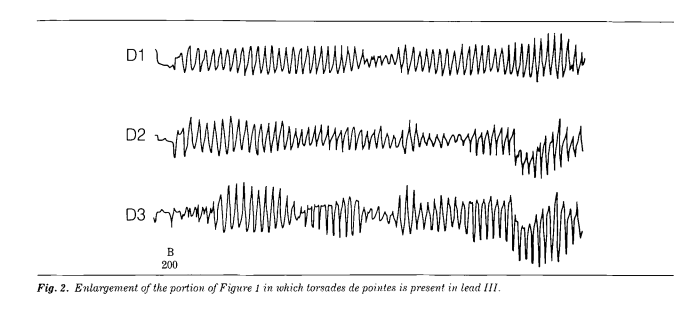 Francois Dessertenne noted "ventricular tachycardia with two variable foci" in a patient in 1966https://abs.twimg.com/emoji/v2/... draggable="false" alt="💡" title="Electric light bulb" aria-label="Emoji: Electric light bulb">He coined the arrythmia torsades de dointes, connoting "twisting peaks" https://bit.ly/2XN9Hp5&q..." title="2/ First, let& #39;s find how torsades was originally described (and named!):https://abs.twimg.com/emoji/v2/... draggable="false" alt="💡" title="Electric light bulb" aria-label="Emoji: Electric light bulb">Francois Dessertenne noted "ventricular tachycardia with two variable foci" in a patient in 1966https://abs.twimg.com/emoji/v2/... draggable="false" alt="💡" title="Electric light bulb" aria-label="Emoji: Electric light bulb">He coined the arrythmia torsades de dointes, connoting "twisting peaks" https://bit.ly/2XN9Hp5&q...">
Francois Dessertenne noted "ventricular tachycardia with two variable foci" in a patient in 1966https://abs.twimg.com/emoji/v2/... draggable="false" alt="💡" title="Electric light bulb" aria-label="Emoji: Electric light bulb">He coined the arrythmia torsades de dointes, connoting "twisting peaks" https://bit.ly/2XN9Hp5&q..." title="2/ First, let& #39;s find how torsades was originally described (and named!):https://abs.twimg.com/emoji/v2/... draggable="false" alt="💡" title="Electric light bulb" aria-label="Emoji: Electric light bulb">Francois Dessertenne noted "ventricular tachycardia with two variable foci" in a patient in 1966https://abs.twimg.com/emoji/v2/... draggable="false" alt="💡" title="Electric light bulb" aria-label="Emoji: Electric light bulb">He coined the arrythmia torsades de dointes, connoting "twisting peaks" https://bit.ly/2XN9Hp5&q...">
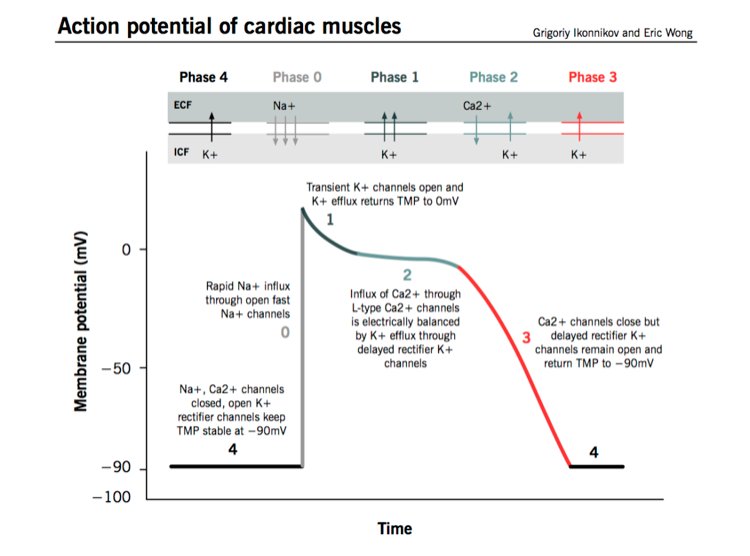
 Sinus beathttps://abs.twimg.com/emoji/v2/... draggable="false" alt="❌" title="Cross mark" aria-label="Emoji: Cross mark">Prolonged QThttps://abs.twimg.com/emoji/v2/... draggable="false" alt="❌" title="Cross mark" aria-label="Emoji: Cross mark">Ventricular ectopic beat during depol (aka an "early after depolarization" or EAD, thought to be calcium-mediated)https://abs.twimg.com/emoji/v2/... draggable="false" alt="❌" title="Cross mark" aria-label="Emoji: Cross mark">Re-entrant arrythmia https://bit.ly/2ruAj1R&q..." title="5/Torsades arises from a specific sequence of events that disrupts repolarization.https://abs.twimg.com/emoji/v2/... draggable="false" alt="✅" title="White heavy check mark" aria-label="Emoji: White heavy check mark">Sinus beathttps://abs.twimg.com/emoji/v2/... draggable="false" alt="❌" title="Cross mark" aria-label="Emoji: Cross mark">Prolonged QThttps://abs.twimg.com/emoji/v2/... draggable="false" alt="❌" title="Cross mark" aria-label="Emoji: Cross mark">Ventricular ectopic beat during depol (aka an "early after depolarization" or EAD, thought to be calcium-mediated)https://abs.twimg.com/emoji/v2/... draggable="false" alt="❌" title="Cross mark" aria-label="Emoji: Cross mark">Re-entrant arrythmia https://bit.ly/2ruAj1R&q..." class="img-responsive" style="max-width:100%;"/>
Sinus beathttps://abs.twimg.com/emoji/v2/... draggable="false" alt="❌" title="Cross mark" aria-label="Emoji: Cross mark">Prolonged QThttps://abs.twimg.com/emoji/v2/... draggable="false" alt="❌" title="Cross mark" aria-label="Emoji: Cross mark">Ventricular ectopic beat during depol (aka an "early after depolarization" or EAD, thought to be calcium-mediated)https://abs.twimg.com/emoji/v2/... draggable="false" alt="❌" title="Cross mark" aria-label="Emoji: Cross mark">Re-entrant arrythmia https://bit.ly/2ruAj1R&q..." title="5/Torsades arises from a specific sequence of events that disrupts repolarization.https://abs.twimg.com/emoji/v2/... draggable="false" alt="✅" title="White heavy check mark" aria-label="Emoji: White heavy check mark">Sinus beathttps://abs.twimg.com/emoji/v2/... draggable="false" alt="❌" title="Cross mark" aria-label="Emoji: Cross mark">Prolonged QThttps://abs.twimg.com/emoji/v2/... draggable="false" alt="❌" title="Cross mark" aria-label="Emoji: Cross mark">Ventricular ectopic beat during depol (aka an "early after depolarization" or EAD, thought to be calcium-mediated)https://abs.twimg.com/emoji/v2/... draggable="false" alt="❌" title="Cross mark" aria-label="Emoji: Cross mark">Re-entrant arrythmia https://bit.ly/2ruAj1R&q..." class="img-responsive" style="max-width:100%;"/>
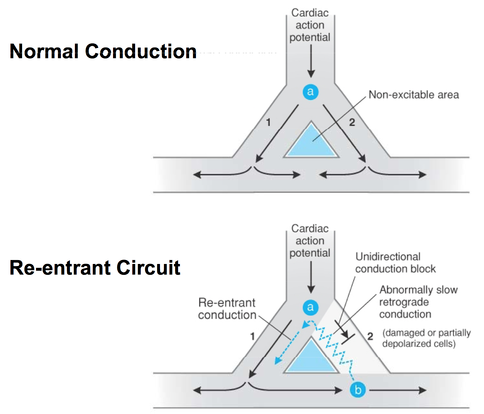 Terrifying but also striking to see https://bit.ly/2OKJdjL&q..." title="6/ It turns out that seeing torsades on the monitor is literally watching a re-entry circuit circulate https://abs.twimg.com/emoji/v2/... draggable="false" alt="💥" title="Collision symbol" aria-label="Emoji: Collision symbol">Terrifying but also striking to see https://bit.ly/2OKJdjL&q..." class="img-responsive" style="max-width:100%;"/>
Terrifying but also striking to see https://bit.ly/2OKJdjL&q..." title="6/ It turns out that seeing torsades on the monitor is literally watching a re-entry circuit circulate https://abs.twimg.com/emoji/v2/... draggable="false" alt="💥" title="Collision symbol" aria-label="Emoji: Collision symbol">Terrifying but also striking to see https://bit.ly/2OKJdjL&q..." class="img-responsive" style="max-width:100%;"/>
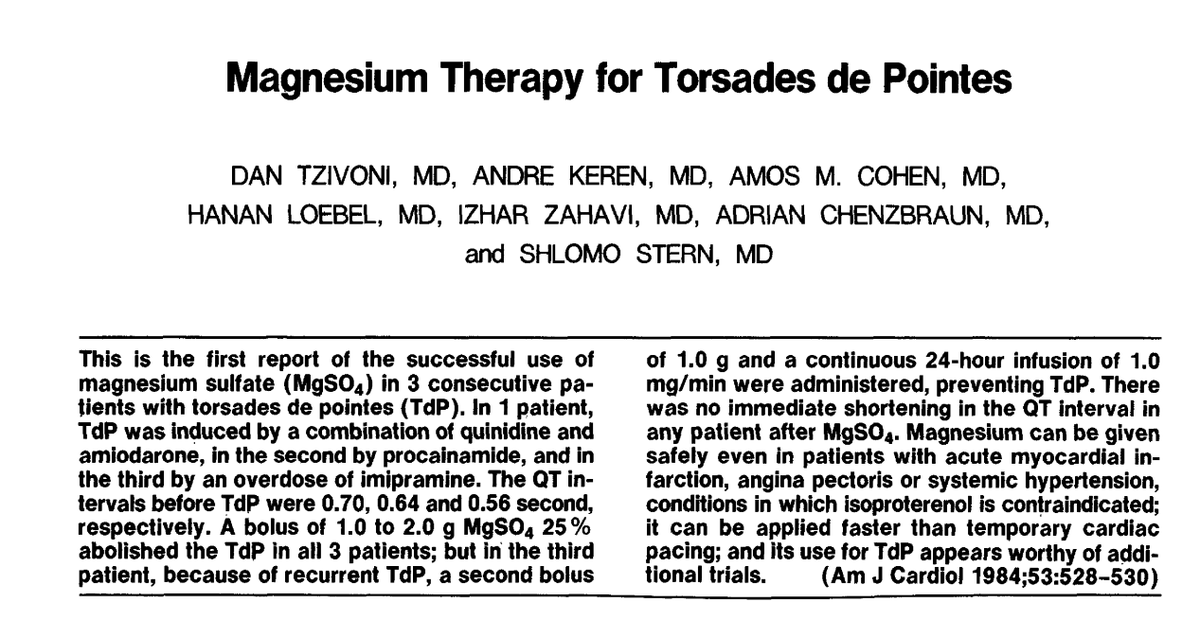
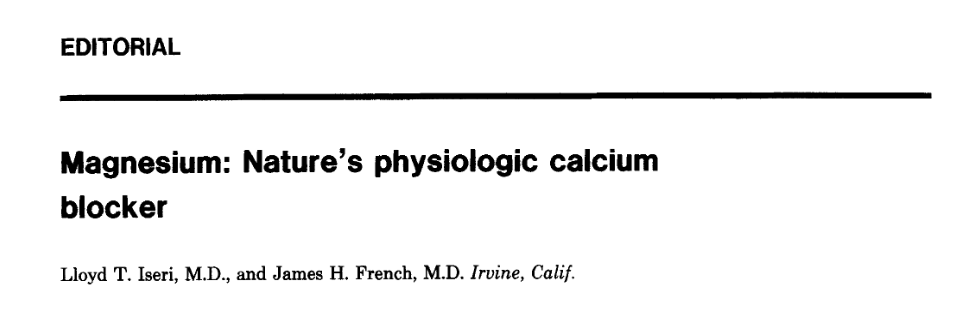
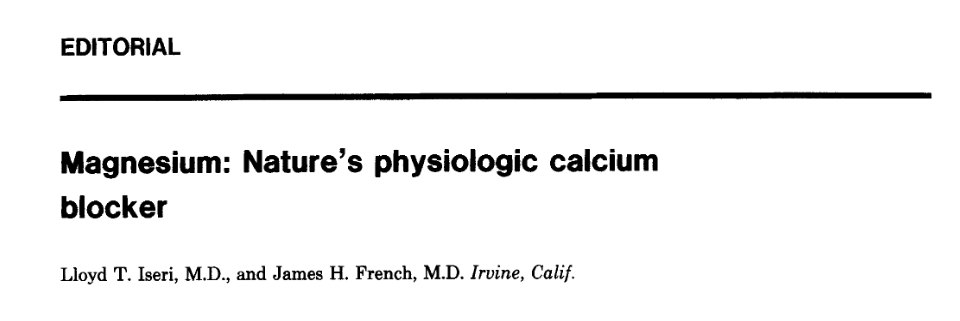 It turns that Mg, as a cation, is an effective Ca channel blocker. https://bit.ly/2OkFt9H&q..." title="9/So how does Mg actually work?https://abs.twimg.com/emoji/v2/... draggable="false" alt="💡" title="Electric light bulb" aria-label="Emoji: Electric light bulb">It turns that Mg, as a cation, is an effective Ca channel blocker. https://bit.ly/2OkFt9H&q..." class="img-responsive" style="max-width:100%;"/>
It turns that Mg, as a cation, is an effective Ca channel blocker. https://bit.ly/2OkFt9H&q..." title="9/So how does Mg actually work?https://abs.twimg.com/emoji/v2/... draggable="false" alt="💡" title="Electric light bulb" aria-label="Emoji: Electric light bulb">It turns that Mg, as a cation, is an effective Ca channel blocker. https://bit.ly/2OkFt9H&q..." class="img-responsive" style="max-width:100%;"/>
 Blocking Ca channels suppresses the EADs, allowing the re-entrant arrythmia to terminate. This was first described in dogs who had torsades-like arrythmias induced by cesium infusions with magnesium rescue. https://bit.ly/2XKz7DK&q..." title="10/ https://abs.twimg.com/emoji/v2/... draggable="false" alt="💡" title="Electric light bulb" aria-label="Emoji: Electric light bulb">Blocking Ca channels suppresses the EADs, allowing the re-entrant arrythmia to terminate. This was first described in dogs who had torsades-like arrythmias induced by cesium infusions with magnesium rescue. https://bit.ly/2XKz7DK&q...">
Blocking Ca channels suppresses the EADs, allowing the re-entrant arrythmia to terminate. This was first described in dogs who had torsades-like arrythmias induced by cesium infusions with magnesium rescue. https://bit.ly/2XKz7DK&q..." title="10/ https://abs.twimg.com/emoji/v2/... draggable="false" alt="💡" title="Electric light bulb" aria-label="Emoji: Electric light bulb">Blocking Ca channels suppresses the EADs, allowing the re-entrant arrythmia to terminate. This was first described in dogs who had torsades-like arrythmias induced by cesium infusions with magnesium rescue. https://bit.ly/2XKz7DK&q...">
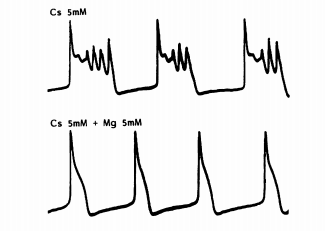 Blocking Ca channels suppresses the EADs, allowing the re-entrant arrythmia to terminate. This was first described in dogs who had torsades-like arrythmias induced by cesium infusions with magnesium rescue. https://bit.ly/2XKz7DK&q..." title="10/ https://abs.twimg.com/emoji/v2/... draggable="false" alt="💡" title="Electric light bulb" aria-label="Emoji: Electric light bulb">Blocking Ca channels suppresses the EADs, allowing the re-entrant arrythmia to terminate. This was first described in dogs who had torsades-like arrythmias induced by cesium infusions with magnesium rescue. https://bit.ly/2XKz7DK&q...">
Blocking Ca channels suppresses the EADs, allowing the re-entrant arrythmia to terminate. This was first described in dogs who had torsades-like arrythmias induced by cesium infusions with magnesium rescue. https://bit.ly/2XKz7DK&q..." title="10/ https://abs.twimg.com/emoji/v2/... draggable="false" alt="💡" title="Electric light bulb" aria-label="Emoji: Electric light bulb">Blocking Ca channels suppresses the EADs, allowing the re-entrant arrythmia to terminate. This was first described in dogs who had torsades-like arrythmias induced by cesium infusions with magnesium rescue. https://bit.ly/2XKz7DK&q...">
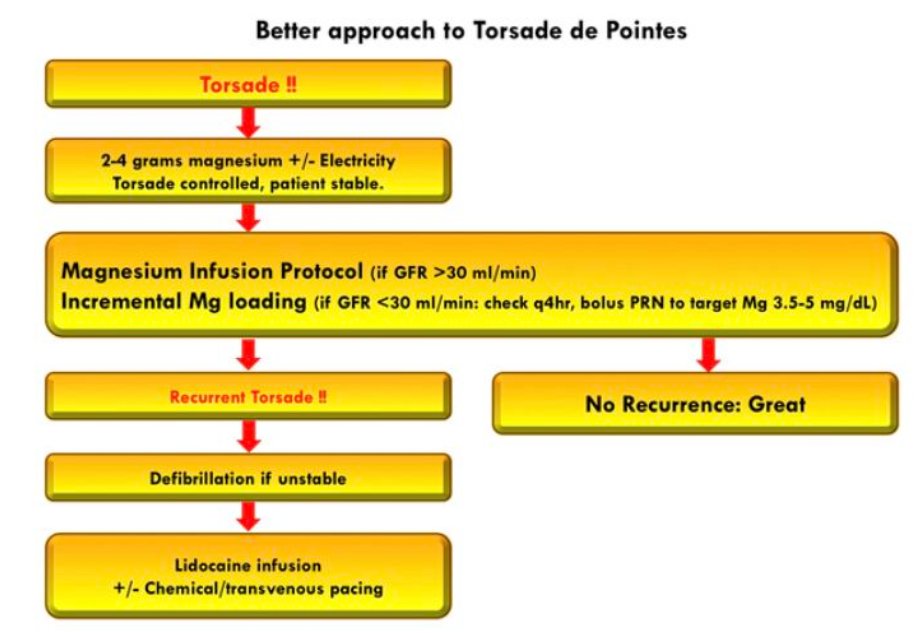
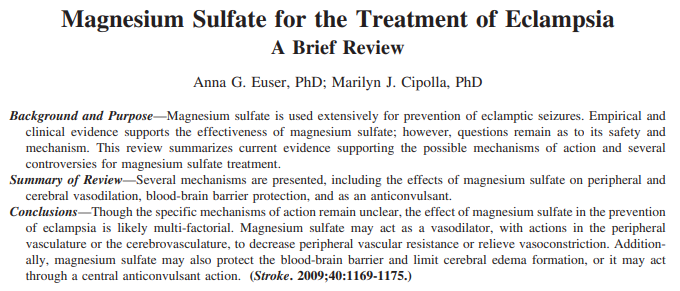 Eclamptic seizures are driven by dysregulated cerebral vasoconstrictionhttps://abs.twimg.com/emoji/v2/... draggable="false" alt="💡" title="Electric light bulb" aria-label="Emoji: Electric light bulb">Mg blocks Ca channels and induced vasodilationhttps://abs.twimg.com/emoji/v2/... draggable="false" alt="✅" title="White heavy check mark" aria-label="Emoji: White heavy check mark">Seizures stop https://bit.ly/2KUupxX&q..." title="12/Calcium channel blockade also explains why Mg treats eclamptic seizures: https://abs.twimg.com/emoji/v2/... draggable="false" alt="💡" title="Electric light bulb" aria-label="Emoji: Electric light bulb">Eclamptic seizures are driven by dysregulated cerebral vasoconstrictionhttps://abs.twimg.com/emoji/v2/... draggable="false" alt="💡" title="Electric light bulb" aria-label="Emoji: Electric light bulb">Mg blocks Ca channels and induced vasodilationhttps://abs.twimg.com/emoji/v2/... draggable="false" alt="✅" title="White heavy check mark" aria-label="Emoji: White heavy check mark">Seizures stop https://bit.ly/2KUupxX&q..." class="img-responsive" style="max-width:100%;"/>
Eclamptic seizures are driven by dysregulated cerebral vasoconstrictionhttps://abs.twimg.com/emoji/v2/... draggable="false" alt="💡" title="Electric light bulb" aria-label="Emoji: Electric light bulb">Mg blocks Ca channels and induced vasodilationhttps://abs.twimg.com/emoji/v2/... draggable="false" alt="✅" title="White heavy check mark" aria-label="Emoji: White heavy check mark">Seizures stop https://bit.ly/2KUupxX&q..." title="12/Calcium channel blockade also explains why Mg treats eclamptic seizures: https://abs.twimg.com/emoji/v2/... draggable="false" alt="💡" title="Electric light bulb" aria-label="Emoji: Electric light bulb">Eclamptic seizures are driven by dysregulated cerebral vasoconstrictionhttps://abs.twimg.com/emoji/v2/... draggable="false" alt="💡" title="Electric light bulb" aria-label="Emoji: Electric light bulb">Mg blocks Ca channels and induced vasodilationhttps://abs.twimg.com/emoji/v2/... draggable="false" alt="✅" title="White heavy check mark" aria-label="Emoji: White heavy check mark">Seizures stop https://bit.ly/2KUupxX&q..." class="img-responsive" style="max-width:100%;"/>
